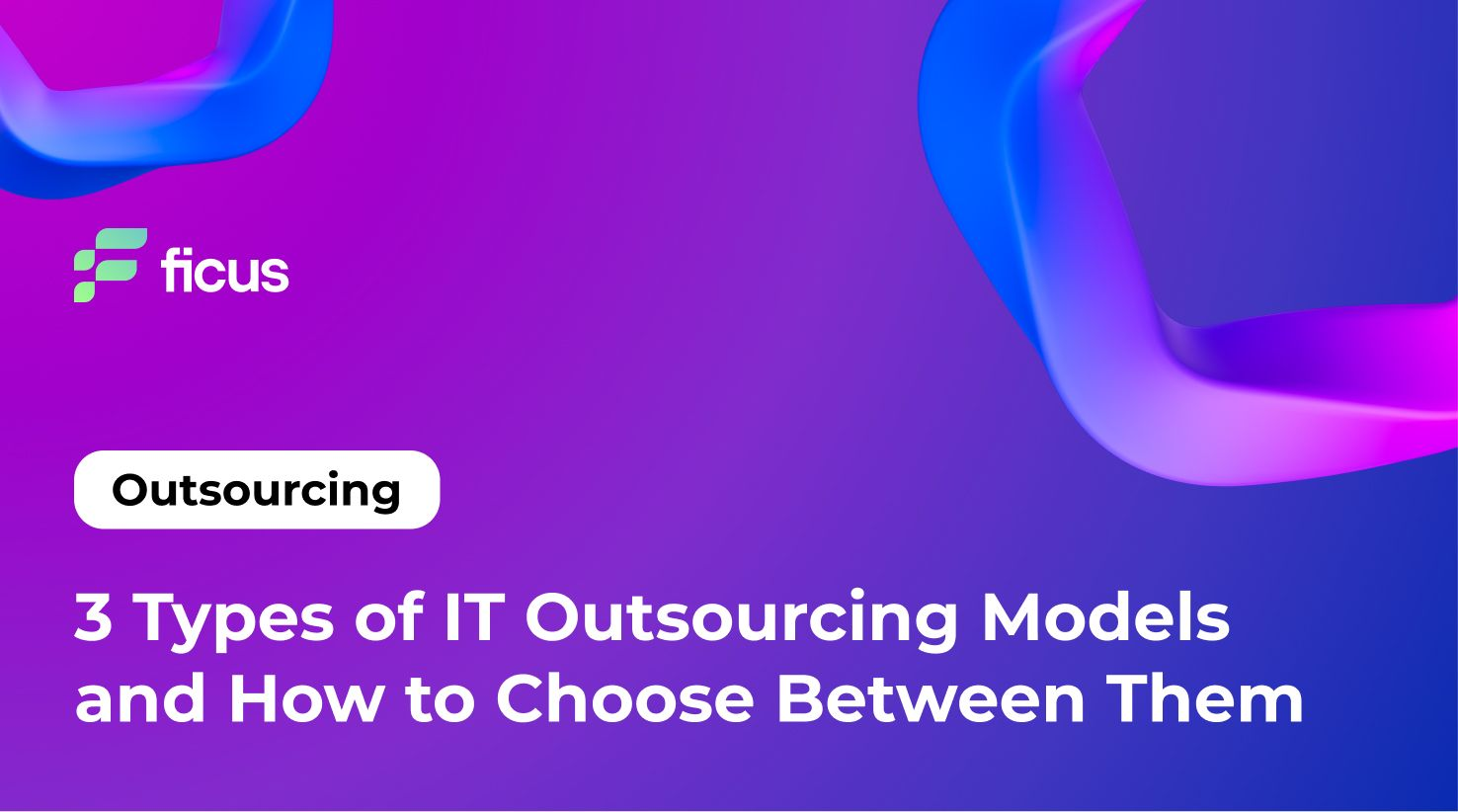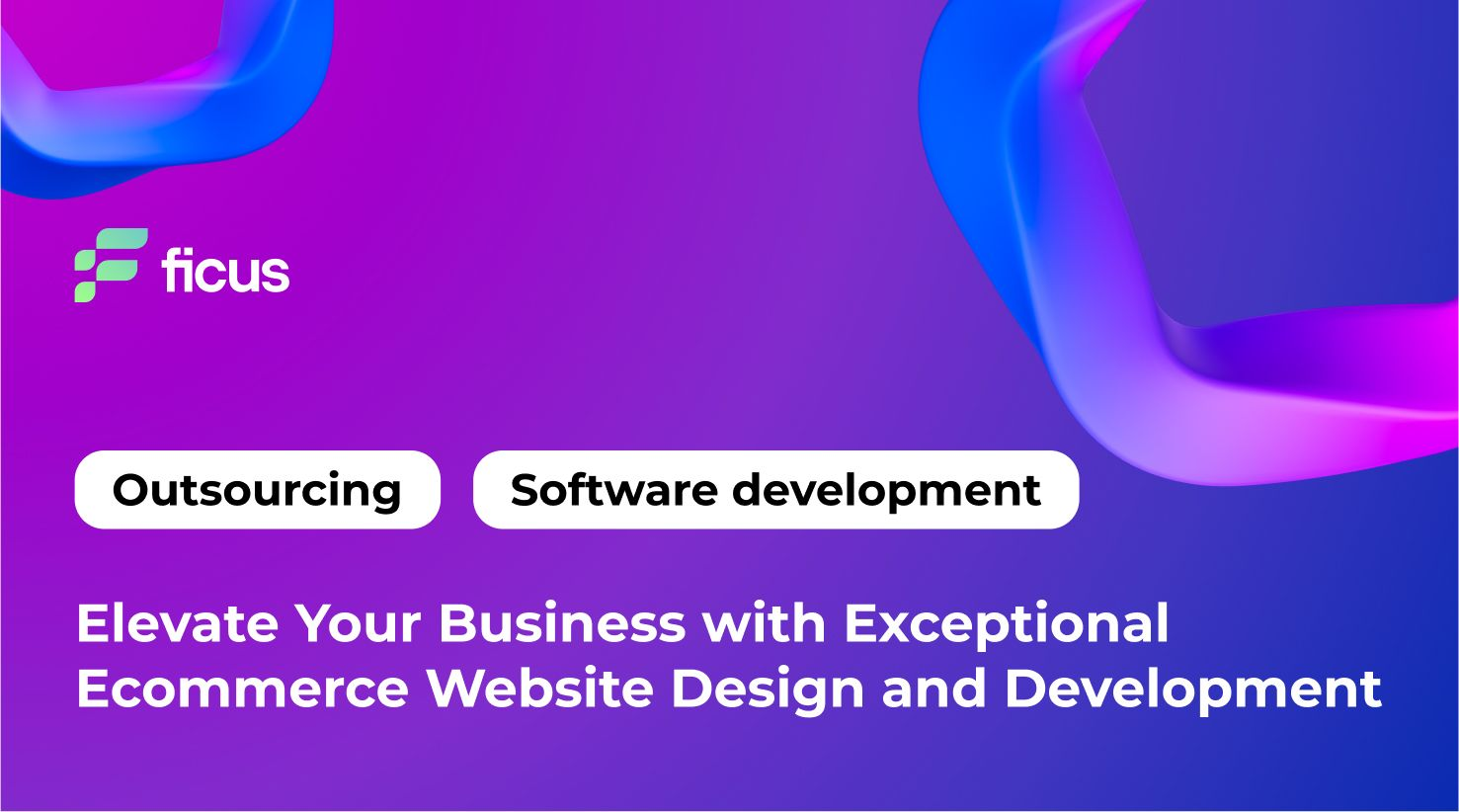IT outsourcing is a critical business strategy that drives innovation and operational efficiency. According to Statista, the global outsourcing market, with promising growth potential, will surge to USD 397.6 billion by 2028.
Software outsourcing alone is projected to hit USD 596.2 billion by 2028, up from Grand View Research and JoinGenius research, which predicts the IT outsourcing market will reach $806.53 billion by 2029. As per a study conducted by GenZ Media, essential services include software development, IT infrastructure management, and cybersecurity, which are crucial for businesses looking to outsource. Leading outsourcing destinations include India, the Philippines, Eastern Europe, and Latin America.In this blog post, Ficus Technologies will explain the current state of the IT outsourcing market and provide insights on choosing the suitable outsourcing model for your business. Understanding the differences among onshore, nearshore, and offshore outsourcing models allows you to align your choice with strategic goals.
- Onshore, nearshore, and offshore outsourcing models offer distinct advantages based on factors such as cultural alignment, cost-effectiveness, and time zone proximity.
- Staff augmentation, dedicated teams, and project-based outsourcing models provide flexibility, stability, and risk management options, catering to specific project needs.
- The article emphasizes the importance of selecting the appropriate outsourcing model based on project scope, duration, and requirements, with Ficus Technologies offering solutions across these models.
Maximizing Business Success with Strategic IT Outsourcing Models
Choosing the right IT outsourcing model is no longer just an operational choice—it’s a strategic imperative. These models empower businesses to access specialized tech expertise, enhance efficiency, and stay agile in a rapidly evolving digital landscape. Whether your focus is on software development, cybersecurity, or AI integration, understanding the different types of outsourcing puts you in the driver’s seat, driving innovation and sustaining competitive advantage.
The Core Types of IT Outsourcing Models
Mastering the three primary types of IT outsourcing—onshore, nearshore, and offshore—is crucial for any business aiming to optimize its outsourcing strategy. Each outsourcing model offers unique benefits and challenges:
- Onshore Outsourcing ensures seamless communication and cultural alignment, which is ideal for projects requiring frequent interaction and strict regulatory compliance. It’s the go-to model for industries like banking and fintech, where regulatory adherence is non-negotiable.
- Nearshore Outsourcing offers a balanced approach, providing cost efficiency and proximity. This model suits businesses looking for flexible solutions that combine cultural similarity with geographic closeness, making managing remote teams easier and ensuring timely service delivery.
- Offshore Outsourcing is synonymous with significant cost savings and broad access to a global talent pool. Ideal for software development outsourcing models and large-scale digital transformation projects, it leverages time zone differences for 24/7 operations, ensuring continuous project progression.
Optimizing Your Outsourcing Business Model
Understanding the nuances of outsourcing pricing models and selecting an appropriate outsourcing business model is critical for maximizing ROI. Whether through process outsourcing models, which involve outsourcing specific business processes, or software outsourcing models, companies can scale efficiently, reduce costs, and focus on core activities.
- Software outsourcing business models provide dedicated expertise in AI, chatbots, and digital solutions, ensuring that projects are completed with precision and innovation.
- Application outsourcing models allow businesses to focus on core competencies by outsourcing the development and management of specific applications. This model is particularly effective in sectors like fintech and banking, where specialized software solutions are crucial.
- Outstaffing models, a form of outsourcing where a company hires employees through a third-party provider, offer businesses the flexibility to hire top-tier talent without the long-term commitment of traditional employment. IT outstaffing is ideal for projects requiring specific expertise or rapid scaling.
Strategic Integration and Risk Management
Incorporating different outsourcing models into your business strategy requires consideration and careful management of risk and resources. Understanding the scope of work, crafting detailed contracts, and selecting the right vendors are crucial in mitigating risk and ensuring successful outsourced operations.
- Partnering with the right providers—whether onshore, nearshore, or offshore—requires a deep understanding of the outsourcing types and the potential impact on your business. Consulting with industry experts can help you tailor your outsourcing business models to match your needs, ensuring optimized performance and efficiency.
- Outsourcing pricing models need to align with your business goals, considering time, resource allocation, and potential augmentation of in-house capabilities. Understanding these models allows for strategic sourcing and vendor management, ensuring your contracts are cost-effective and performance-driven.
Businesses can achieve digital transformation with each type of outsourcing model. This approach optimizes software development and process outsourcing models and ensures your outsourcing strategy is resilient, scalable, and aligned with your long-term business objectives.

The 3 Types of Outsourcing Models Summary
Onshore Outsourcing
Onshore outsourcing involves working with providers in the same country. It ensures smooth communication and cultural alignment.
Pros:
- Cultural and Language Cohesion
- Real-Time Communication
- Regulatory Compliance
Cons:
- Higher Costs
- Limited Talent Pool
Nearshore Outsourcing
Nearshore outsourcing partners with providers in neighboring countries, balancing cost savings with proximity.
Pros:
- Cost-Effective
- Cultural Alignment
- Proximity for Collaboration
Cons:
- Time Zone Adjustments
- Legal Complexities
Offshore Outsourcing
Offshore outsourcing taps into global talent, often at a lower cost, but requires careful management.
Pros:
- Significant Cost Savings
- Access to Global Talent
- 24/7 Operations
Cons:
- Communication Barriers
- Cultural Differences
- Quality Control Challenges
Businesses can enhance performance, reduce costs, and maintain a competitive edge by strategically choosing the right IT outsourcing model.
Strategic Factors in Choosing an IT Outsourcing Model
Selecting the right IT outsourcing model is more than a logistical choice—it’s a foundational decision that can redefine your business’s future. The complexity and implications of this decision require deep strategic thought, as it directly impacts your company’s agility, innovation capacity, and risk management approach. This decision isn’t just about operational efficiency; it’s about positioning your business to thrive amid competitive pressures and technological evolution.
Project Scope and Complexity
The scope and complexity of your project are pivotal in determining the most appropriate outsourcing model. For expansive projects requiring specialized skills or advanced technical capabilities, offshore or nearshore outsourcing can be particularly advantageous. These models provide access to broader talent pools and can significantly reduce costs when local expertise is limited or cost-prohibitive. Conversely, projects requiring tight integration with your core operations, requiring ongoing and close collaboration, might necessitate onshore outsourcing. Proximity in these cases enables real-time adjustments and ensures that the project remains tightly aligned with your business’s specific needs and overarching vision.
Cost Efficiency and Budget
Cost efficiency is often a driving force behind an outsourcing model. Offshore outsourcing generally offers the most substantial savings, cutting labor and operational costs, making it an ideal choice for companies focused on maximizing their budget. However, these savings must be weighed against potential challenges, such as managing remote teams and overcoming communication barriers. Nearshore outsourcing offers a compromise—achieving cost-effectiveness while reducing issues related to time zones and cultural differences. Onshore outsourcing, though typically more expensive, provides unparalleled benefits in terms of seamless communication, regulatory alignment, and cultural fit. The ultimate measure of cost efficiency is the immediate savings and the long-term value and return on investment each model offers.
Communication and Time Zone Considerations
Effective communication is the linchpin of successful outsourcing. Onshore outsourcing naturally offers the highest ease, eliminating time zone challenges and enabling instant, real-time communication. This model is essential for projects requiring frequent updates and swift, responsive decision-making. Nearshore outsourcing minimizes the difficulties posed by time zone differences, facilitating almost real-time communication while benefiting from cost savings. Offshore outsourcing, however, requires more sophisticated communication strategies, such as establishing overlapping work hours and utilizing advanced collaboration tools to ensure that time zone differences do not impede project progress. Maintaining clear, consistent communication across borders is crucial to achieving the desired project outcomes and ensuring a cohesive partnership.
Risk Management and Security
Risk management is a critical factor in selecting an IT outsourcing model. Onshore outsourcing generally provides the highest level of security and compliance, operating within the same legal and regulatory framework as your business. This model is particularly advantageous for industries with stringent data protection and regulatory requirements, such as banking and fintech.
Nearshore and offshore outsourcing introduce additional risks, especially concerning data security and intellectual property protection. These risks can be mitigated through rigorous contracts, robust security measures, and thorough due diligence. Managing and mitigating these risks effectively is crucial to the success of any outsourcing relationship, ensuring that your business’s interests are protected while maximizing the benefits of outsourcing.
Outsourcing Models in Action
The impact of selecting the right IT outsourcing model is demonstrated through real-world applications, where businesses strategically employ different models to meet specific objectives.
Real-World Applications of Outsourcing Models
Onshore Outsourcing: A Financial Services Firm
A leading U.S. financial services firm chose onshore outsourcing to manage its IT infrastructure. The decision was driven by the need for strict regulatory compliance and top-tier data security—requirements best met by working with a domestic provider. This model facilitated seamless communication and swift problem-solving, which is critical in managing sensitive financial data in a highly regulated environment. Ficus Technologies can offer tailored onshore outsourcing solutions for businesses facing similar challenges that align with stringent regulatory frameworks while ensuring operational efficiency.
Nearshore Outsourcing: A European Retailer
A major European retailer opted for nearshore outsourcing to develop its e-commerce platform. The retailer achieved substantial cost savings by choosing a provider in a neighboring country while maintaining cultural and language alignment. The geographic proximity also allowed for occasional face-to-face meetings, which were crucial for aligning project goals and ensuring timely delivery. For companies looking to balance cost with proximity, Ficus Technologies provides robust nearshore outsourcing services that leverage regional expertise while maintaining strong communication channels.
Offshore Outsourcing: A U.S. Tech Startup
A U.S.-based tech startup leveraged offshore outsourcing to scale its software development efforts rapidly. By partnering with a highly skilled team in India, the startup accessed top-tier talent at a fraction of the cost of hiring domestically. The challenges of time zone differences were managed by establishing overlapping work hours, ensuring continuous project progress. This approach enabled the startup to accelerate product development and secure a competitive edge in the market. Ficus Technologies offers expert offshore outsourcing solutions that connect businesses with global talent while ensuring smooth operational workflows across time zones.
Not sure which outsourcing model to choose?
Contact UsHow Ficus Technologies Can Empower Your Business
Choosing the right outsourcing partner is crucial to unlocking your company’s full potential. Ficus Technologies offers tailored solutions across all IT outsourcing models to help you navigate complex challenges and drive innovation in your business. Whether you want to enhance agility, scale quickly, or manage long-term projects, Ficus Technologies has the expertise to support your goals.
Staff Augmentation Model
Scale your workforce with precision using our Staff Augmentation Model. Whether you require niche expertise in AI, cybersecurity, or data management, Ficus Technologies connects you with top talent, enabling you to meet your project demands swiftly and efficiently. Explore how we can augment your team’s capabilities here.
Dedicated Team Model
For projects that demand consistent focus and long-term commitment, our Dedicated Team Model provides a cohesive group of IT professionals dedicated solely to your objectives. This model ensures your project progresses smoothly and aligns with your strategic goals, offering unparalleled commitment and expertise. Discover more about how we can build a dedicated team tailored to your needs here.
Project-Based Model: Ensuring Excellence
Our Project-Based Model guarantees excellence at every stage of your project. With meticulous planning and transparent communication, Ficus Technologies ensures that your project is delivered on time, within scope, and to the highest quality standards. Learn more about how we can guide your project to success by contacting us here.
By partnering with Ficus Technologies, you gain more than just outsourcing services—you gain a strategic ally committed to driving your business forward, ensuring that your chosen outsourcing model aligns perfectly with your business objectives and operational needs.
The three primary IT outsourcing models—onshore, nearshore, and offshore—serve distinct business needs. Onshore offers seamless communication and cultural alignment but at a higher cost. Nearshore balances cost-effectiveness with proximity, reducing time zones and cultural barriers. Offshore provides significant cost savings and access to global talent but requires strict communication and quality control management. Choose the model that best aligns with your business goals and budget.
Choosing the suitable outsourcing model depends on your project’s scope, budget, and operational needs. Onshore is ideal for projects needing close collaboration and regulatory compliance. With its balanced approach to cost and ease of communication, Nearshore offers a practical solution. Offshore maximizes cost savings and global expertise but requires a solid risk management framework. Match your needs with the strengths of each model.
Onshore outsourcing offers superior communication, cultural alignment, and legal compliance, making it ideal for close collaboration. Offshore outsourcing provides significant cost reductions and global talent access but requires careful communication and quality management. Your choice depends on project needs and risk tolerance.
Offshore outsourcing poses risks like communication barriers, cultural differences, and security concerns. To mitigate these, establish clear communication protocols, use robust project management tools, and ensure compliance with data security standards.
Nearshore outsourcing combines cost savings with operational efficiency. It offers proximity, similar time zones, and cultural compatibility, facilitating smoother communication and collaboration. It’s a balanced choice between onshore and offshore models.
The Staff Augmentation Model lets you temporarily scale your workforce by adding specialized external experts. It’s ideal for projects needing specific skills like AI or cybersecurity without long-term hiring commitments. Use it when agility and expertise are critical.
Yes, you can transition between outsourcing models as your project evolves. Start with offshore for cost savings, then shift to nearshore or onshore for better communication. This flexibility empowers you to face changing project demands and operational needs, ensuring you remain in control.
Outsourcing pricing models—fixed-price, time-and-materials, or dedicated team—directly impacts project cost and success. Fixed-price offers budget certainty but limits flexibility. Time and materials allow adjustments but can increase costs. A dedicated team provides ongoing collaboration but requires a higher initial investment. Choose based on your need for cost control and flexibility.
Onshore outsourcing carries the lowest risk with shared legal frameworks and cultural alignment. Nearshore offers moderate risk with similar benefits but different regulations. Offshore carries the highest risk due to time zone differences and cultural disparities. Manage offshore risks with strong oversight and clear communication.
Select an IT outsourcing partner with expertise in your required technologies, a solid track record, and the ability to integrate with your team. Ensure they have strong communication skills, cultural alignment, and robust security practices. They should align with your values and goals.









This comprehensive article brilliantly dissects the three IT outsourcing models, providing valuable insights into each one’s strengths and considerations. It is an invaluable resource for businesses seeking to optimize their IT outsourcing strategy. The clear breakdown of when to choose each model and Ficus Technologies’ expertise in all three makes this a must-read for those navigating the outsourcing landscape.
Navigating the intricacies of IT outsourcing can be daunting, but this article makes the process more accessible. The breakdown of onshore, nearshore, and offshore models, along with staff augmentation, dedicated teams, and project-based models, offers a well-rounded understanding of the options available. Ficus Technologies’ expertise and versatile solutions make it a compelling choice for businesses seeking outsourcing success.